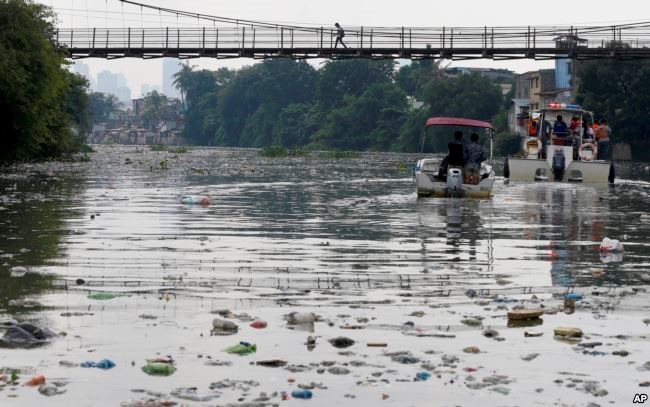River Plastic Counter
The Problem
It is unknown how much debris actually flows into our oceans each year. Best estimates place the number at around eight million tons per year, though this is based on best guesses and logical estimates. It is impossible to manage a problem such as marine plastic debris without being able to measure it. Without knowing how much marine debris is actually entering the ocean it is hard to know where to address efforts to leverage maximum impact, or whether mitigation efforts are having their intended effects. It is believed that much of the debris that enters the ocean originates from a dozen or so rivers in Southeast Asia, however rivers the world over also contribute. Once debris, such as plastic, enters the ocean it breaks down and becomes more diffuse making it difficult to measure. It would be far easier to measure the flow of this debris before it enters the ocean when it is more concentrated and more intact, yet few systems exist to cheaply and effectively accomplish this task.
Our Proposal
The proposed solution is to develop a cheap, computer vision system that can monitor debris flow rates in rivers and other water ways. The vision system will attach to the underside of bridges and face down at the waters surface and collect video or still imagery. The frames or images will either then be processed on board the device, or wirelessly transmitted to the cloud. In either case the images will be analyzed to count the pieces of debris within the frame, using common image recognition algorithms, such as those used by many recycling facilities for sorting plastics. The device will conduct these surveys over weeks, months, or years, all the while tracking debris flow. Power will be supplied by a small solar PV array. Communications can be accomplished through cellular or iridium satellite (for more remote locations). The system should be able to synch-up with local weather data, increasing frame rate when heavy rainfall increases the river flow. This solution will provide baseline values on how much debris flows through a river. With a better way to measure, communities can now implement and test the effectiveness of different solutions.
We Assume that...
That it is OK to add these devices to the underside of bridges and there are no regulations prohibiting it other than local government blessing
That communities and cities will want to measure the amount of debris flowing to the sea via their watersheds and waterways
Constraints to Overcome
The bits of technology to make this work are all available, the challenge will be in integration and long duration autonomous operation. Operation of the vision system during night time operation is expected to present a challenge, but this can be side-stepped (at least initially) by operating during daylight hours when sufficient light is available for the vision system to detect debris on the water surface and then extrapolating those flow rates from daytime surveys to estimate nighttime surveys.
Current Work
Find suitable team members, refine concept, research suitable commercial off the shelf technologies that can be integrated together, identify suitable pilot test site, work with local government or authority bodies for permission to test, develop prototype, test in controlled environment, deploy
Current Needs
Need to build a team with necessary skills in software and hardware design, including optics, computer vision systems, machine learning, and cloud processing.
